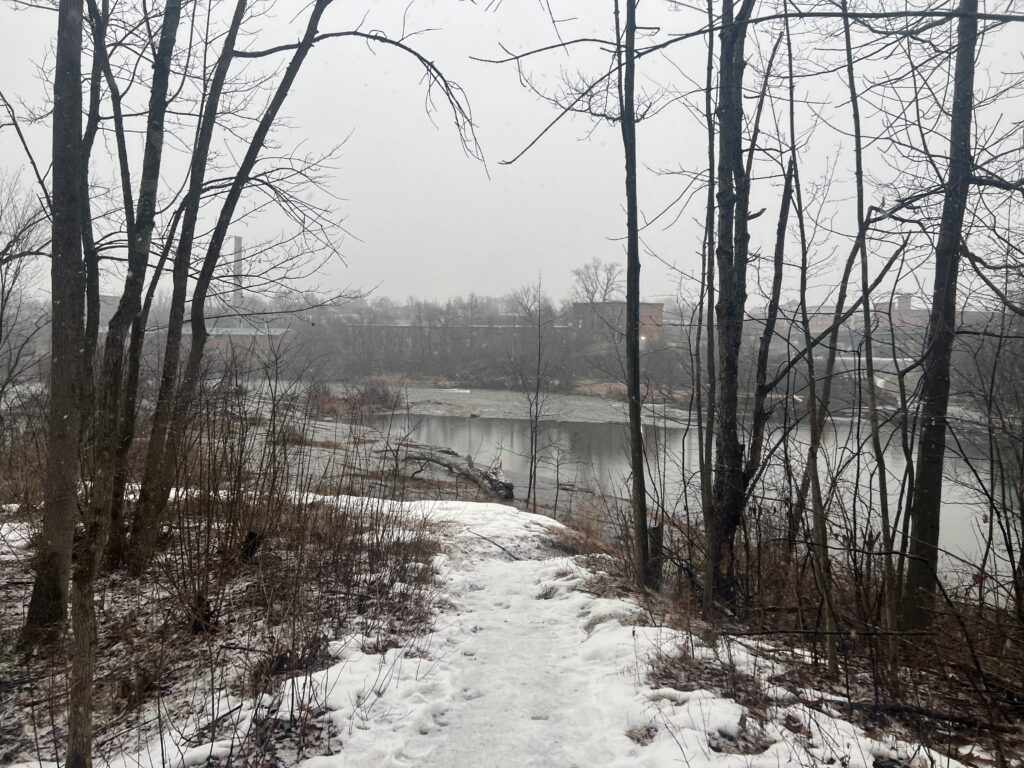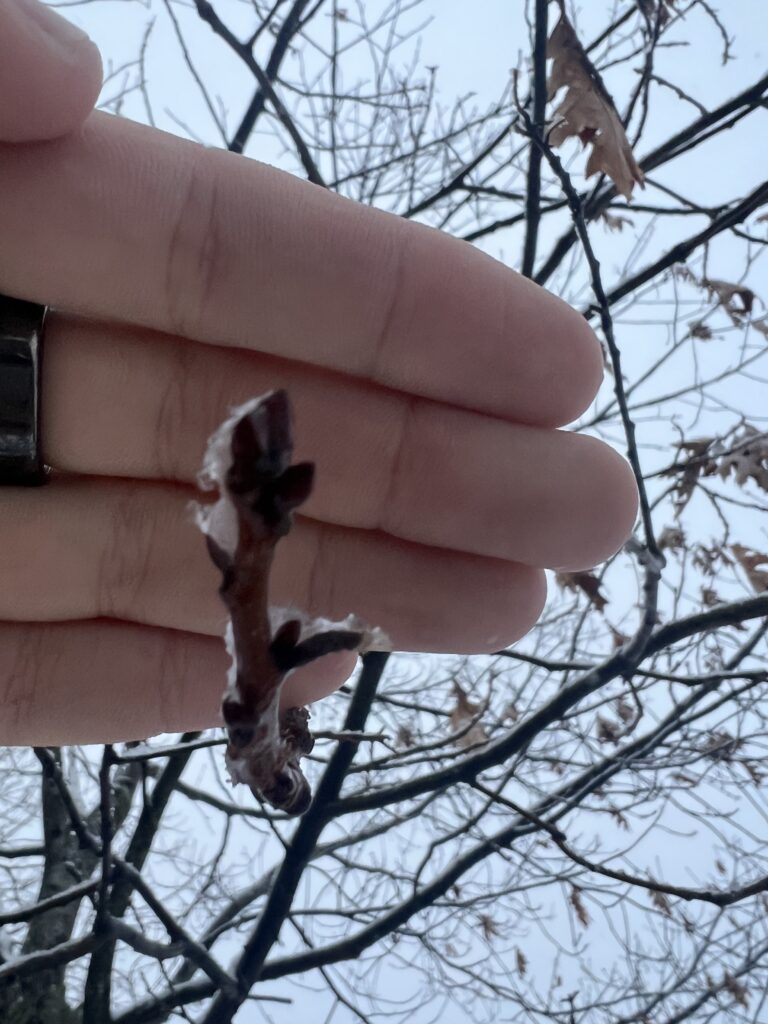March 25th, 2023
Adopting a Tree

There was still a small coating of snow packed on the wooded parts of my site, but all of the snow from the rock flat has melted off into the river. All of the snowmelt from upstream has raised the water level to the highest that I have seen as a part of this project. The land bridge is not much of a bridge anymore, half being submerged by the flow of the river atop.
I scavenged the site to find one of the following trees: red maple (Acer rubrum), Northern red oak (Quercus rubra), paper birch (Betula papyrifera), or American beech (Fagus grandifolia). I remember from the fall seeing many beech and some red oak, too. However, on going back to the site I had a much harder time finding these species with no leaves to go off of. I started to see some red oak leaves on the ground peeking out under the snow, so I looked around. I managed to find one that still had some dead leaves hanging down from branches. This made it really easy to identify that the tree was a Northern Red Oak. Looking specifically at the bud, it has the characteristic many buds from the end of the twig. To differential from other oaks such as white oak, I looked at the length of the buds. White Oaks generally have stubbier buds than Northern Red Oaks and the bud that I had found. To differentiate from maples, I looked for bud scars, since maples tend to have many. Cottonwood buds are sharper than the buds that I found, which rules out cottonwood. There were very few, so my determination from the bud seem to match the clear Northern Red Oak leaves.

